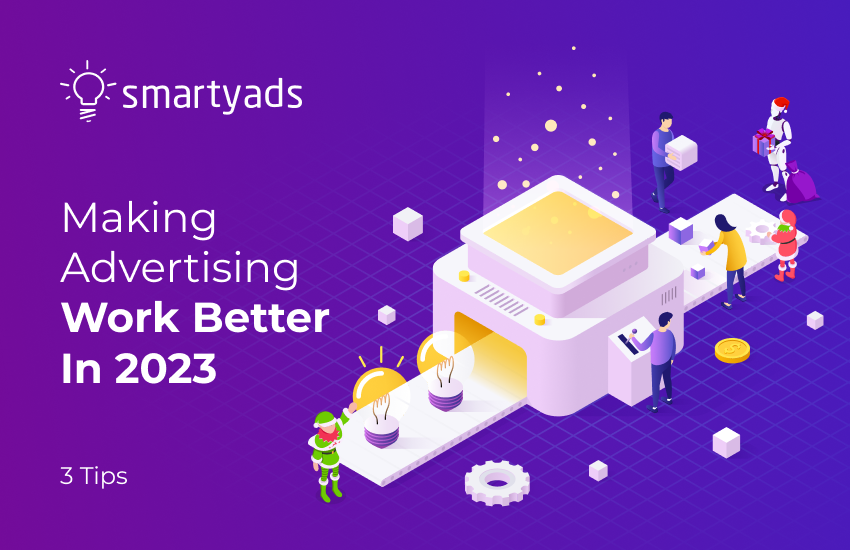The year 2022 is coming to an end. For many, it was difficult and full of hard decisions, but even in the most demanding times, there is room for development and creativity. Even in the most challenging years, there are reasons for joy and gratitude.
Therefore, we want to say big thanks to all our partners for staying with us, for your reliable support, and for our productive partnership. As the new year approaches, it brings completely new opportunities and challenges to care about. So, how do you make the world know about a brand? How do you get a hold of it in the minds of users? How do you measure and attribute campaigns in the cookieless era?
To these and other questions, we provide answers below. Find out how to improve the quality of advertising in 2023.
Work on the quality of targeting
Many marketers, and thus their campaigns, suffer from a lack of data about their target audience. Because of this, campaigns perform worse than they potentially could with more accurate data.
The main reason for this is the ever-evolving privacy landscape. Tightening privacy regulations make it harder for marketers to receive consent for data gathering and processing.
What can you do in case you lack precise data for targeting?
1) Collect first-party data
This step is a good option, especially considering the impending cancellation of cookies. According to stats, collecting first-party data is a number one choice that 54% of marketers embrace in current realms. First-party data is all the types of useful information that brands can collect directly from their customers — website data, data from surveys, polls, emails, and, of course, web forms.
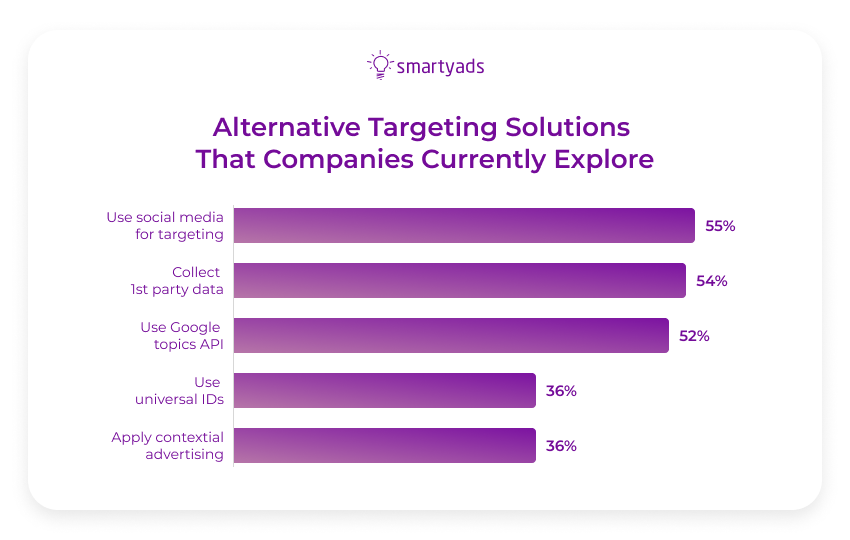
2) Discover how to use targeting options to their fullest
Targeting on advertising platforms can be tricky for newcomers. If you apply too many options, you may end up having too little traffic that corresponds to your requirements. On the contrary, if you ignore targeting options, you may end up serving ad impressions to those people who are outside of your target audiences, so your product or service will not be interesting to them.
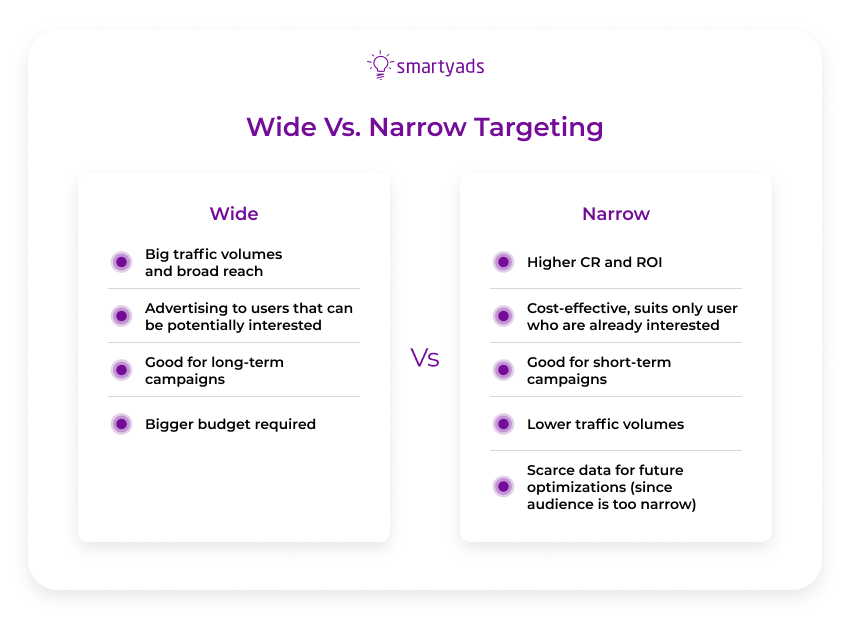
When you are narrowing targeting, your campaigns' ROI and effectiveness increase. At the same time, the traffic volumes and reach will be lower. For this reason, narrow targeting campaigns are commonly used for short-time campaigns. Wider targeting will benefit you more if you want to raise brand awareness on a long-term basis. Basically, you will be addressing those audiences who fall within the ‘potentially interested’ niche.
3) Explore alternative targeting methods
As we’ve seen in the graphics above, many marketers will also explore alternative targeting methods, e.g., targeting on social media, Google topics API, first-party data, and more.
Google topics API is a newly proposed Privacy Sandbox for Interest-based advertising. This solution will categorize the sites people visit into various topics. These categories will make ad serving more relevant for many marketers.
A certain share of marketers will also invest in contextual advertising as it relies on the keywords and interpretation of page context for ad targeting (which is privacy-friendly). Collaborating with influencers and micro-influencers on social media can also be an amazing way to capture the interest of your potential audiences. More than 61% of consumers trust influencer recommendations, while only 38% trust brand-produced content.
Be more attentive to creatives
The recent years' central theme in the programmatic world is the upcoming disappearance of cookies. Although it has only been discussed for the last three years, it seems to finally happen in 2024. And with increased user privacy, creativity becomes even more critical.
Imagine if we went back to a time without programmatic, when good creatives were the only thing that could attract a potential customer. Today, of course, that's not entirely true; programmatic still has advantages, but it will become more difficult to hook a potential customer than before.
Even if the end of cookies support will be delayed for another year, it is worth paying more attention to the creatives because, in any case, they remain the best way to attract attention and increase brand awareness. Who doesn't know a Christmas Santa on a Coca-Cola truck? And what is that truck? That's right, a great creative.
We expect a further increase in demand for every non-standard ad format, which exceeds the standard, flat display ad formats. This trend is much stronger than in previous years and includes formats like “page takeover,” intrusive display creatives, and audio ads, says Krzysztof Lis, Partnerships & Consultancy Expert, Yieldbird, in a commentary for the IAB report.
If you plan to prepare holiday ads, keep in mind that the holiday calendar will be your best helper — based on it, you can schedule dates and prepare campaigns beforehand.
By the way, our DSP supports omnichannel and interactive creatives and allows ad campaigns to be created and managed across devices from one place. In 2022, we’ve also partnered with exclusive creative partner Jam — thanks to this, advertisers can develop their creatives professionally and then serve them at the right time and place thanks to the targeted advertising capabilities of SmartyAds.
Use the latest programmatic advertising formats: CTV, DOOH, Audio, InGame, etc.
The demand for sophisticated ad formats is likely to continue to grow as these formats bring in the most conversions and achieve goals best.
Programmatic solutions are now becoming necessary for buyers and sellers, so implementing and working with advanced formats is for all marketers who want to future-proof their work in 2023.
With the growing share of CTV, DOOH, and programmatic audio advertising, more and more emphasis will be placed on controlling and evaluating these channels from one place in a holistic manner, asserts David Bauckmann, CTO, ImpressionMedia in a commentary for a report by IAB.
What are these formats?
CTV is advertising on streaming services, broadcasted on any digital device (often a TV). The format became especially relevant during the Covid-19 pandemic due to the fact that people were spending more time at home.
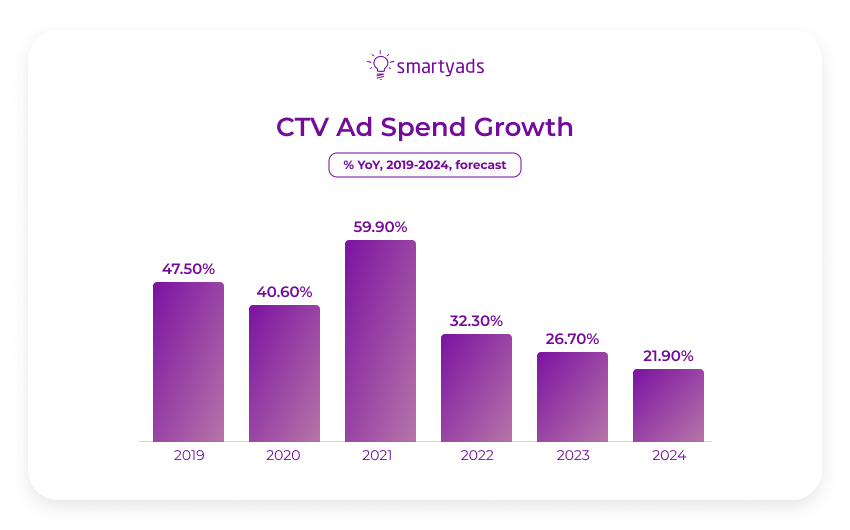
DOOH is programmatic advertising that is broadcasted on digital screens located in public places: on the streets, in shopping malls, on public transportation, in elevators, etc. Basically, it is outdoor advertising, only with the benefits of programmatic.
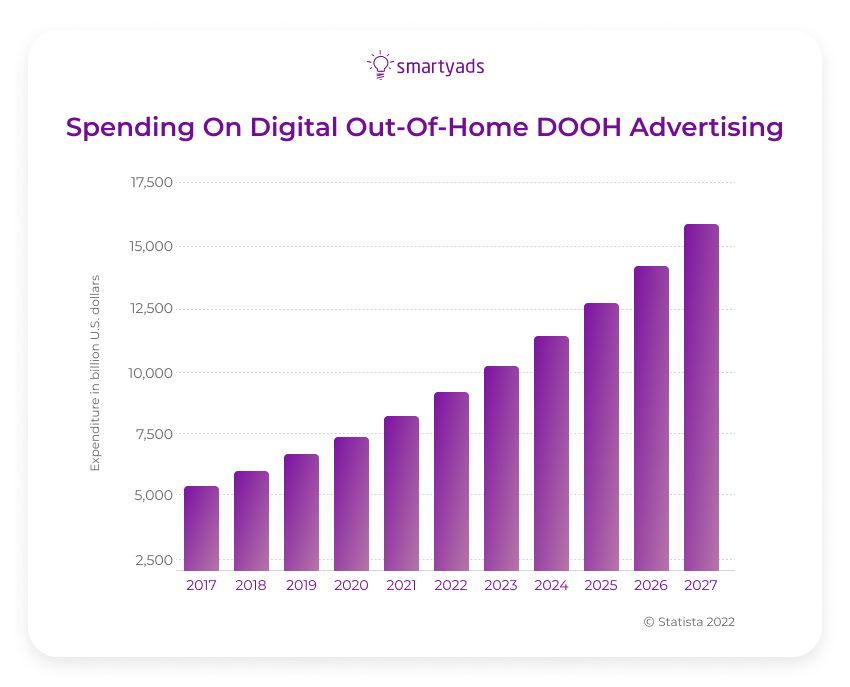
Audio is a format embedded in the audio tracks of podcasts, playlists, or any other audio content options. Meanwhile, the programmatic component helps deliver the right audio ad to the right user.
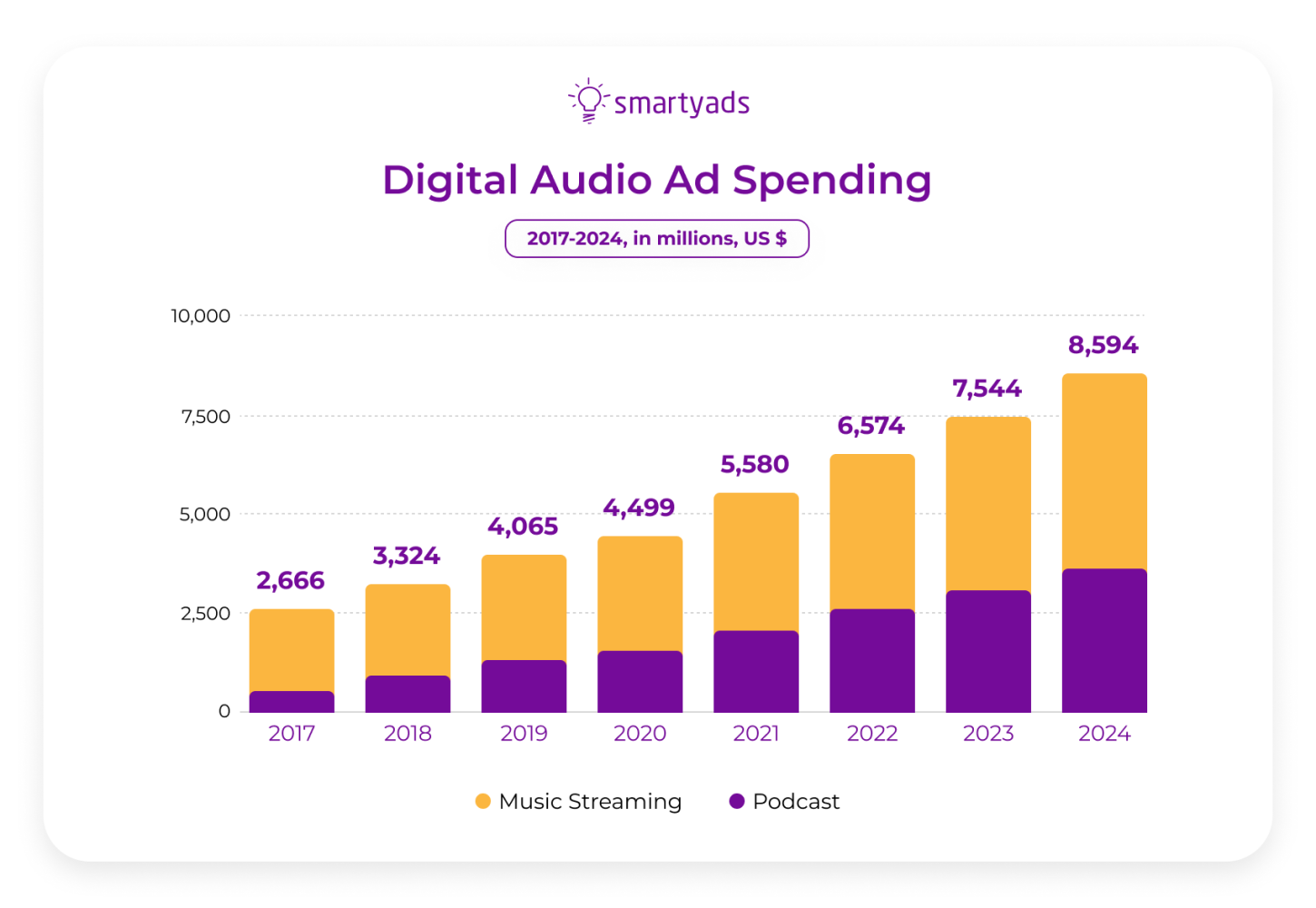 InGame — programmatic advertising that is embedded in a game application. It can appear in the form of a banner, video, or rewarded video.
InGame — programmatic advertising that is embedded in a game application. It can appear in the form of a banner, video, or rewarded video.
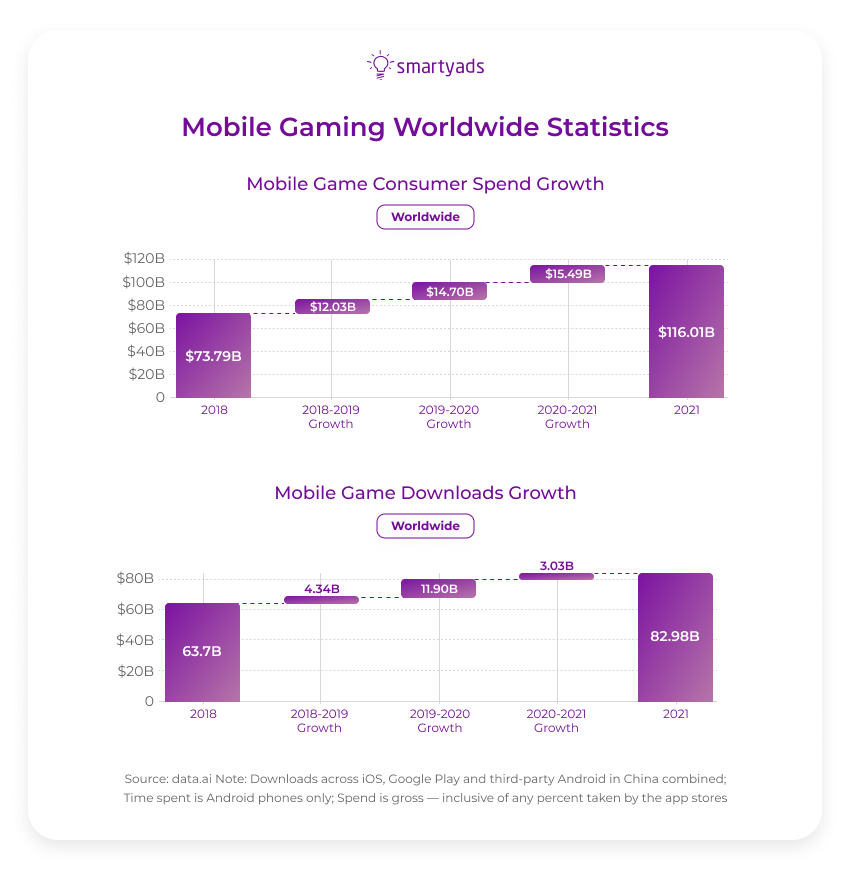
These formats will obviously continue to be relevant in 2023, so we strongly recommend keeping them in mind. Of course, all of these formats are available at SmartyAds.
The last word
Remember to follow these little tips in the new year — your advertising campaigns will please you more often and in greater numbers. Never turn your back on innovation because everything new is the engine of progress and the magnet for a successful future.
To conclude this post, we would like to quote Abraham Lincoln: The best way to predict the future is to create it.
This is exactly what we do at SmartyAds on a daily, hourly basis. We create the future we want to see for us, our partners, and our clients. We wish you happiness in the new year and hope for further success and achievements together.
